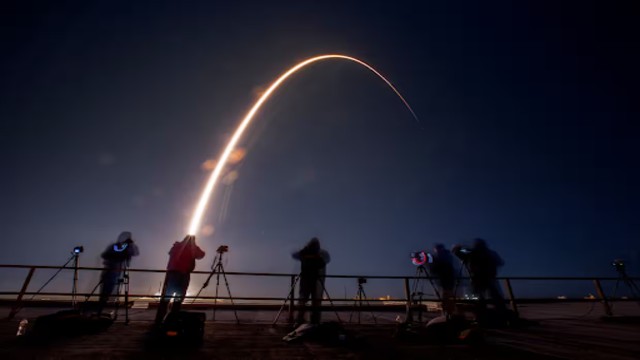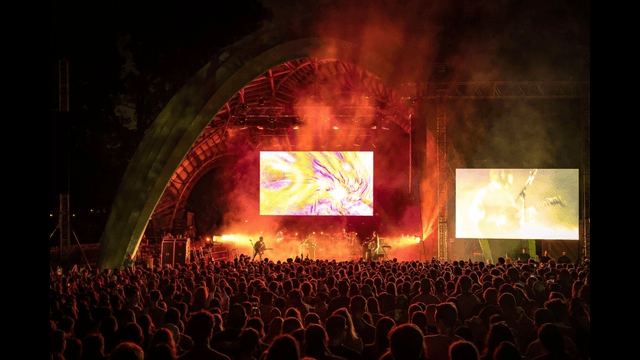
On Wednesday, a SpaceX Falcon 9 rocket launched from Cape Canaveral, Florida. Image via The Guardian
On Wednesday, two privately-built lunar landers were launched toward the moon, after a shared ride aboard a SpaceX Falcon rocket from Florida’s Kennedy Space Center. The mission marks a significant step for space start-ups, as companies from Texas and Japan split the costs for this early-morning launch.
At 1:11 AM ET, the Falcon rocket blasted off, carrying two spacecraft. One is a rover named Resilience from the Tokyo-based company, ispace, and the other is a lander from Firefly Aerospace in Cedar Park, Texas. Firefly’s Blue Ghost Mission 1 is set to conduct several experiments for NASA once it lands in early March.
After an hour into flight, the two spacecraft separated and began heading independently toward lunar orbit. The US lander is expected to land first, while ispace’s larger lander will arrive later, between May and June.
For ispace, this mission is a chance for redemption. Their previous attempt in April 2023 ended in failure when their lander unexpectedly accelerated and crashed into the moon. Now, Resilience aims to gather moon dust for analysis and test potential sources of water and food for future missions with astronauts. The rover weighs 11 lbs (5 kg) and will make several short trips from its lander, which is set to land at Mare Frigoris, located on the far northern side of the moon.
In a tweet, ispace confirmed that it had established communication with Resilience, ensuring that the rover was stable and generating power while in orbit.
The goals for Firefly’s Blue Ghost mission are similar. If successful, it will help lay the groundwork for future human missions to the moon, especially after NASA’s Artemis III mission, slated for mid-2027. This will be the first crewed mission to land on the moon since the Apollo program in 1972.
NASA has paid Firefly $145 million for this mission and 10 different experiments. These experiments include vacuuming dirt, drilling beneath the surface to measure temperatures, and testing a device designed to clean dust and abrasive particles off spacesuits and equipment. The mission will also test Firefly's navigation system and a method to shield computers from radiation in space.
Both spacecraft will operate for about two weeks after landing, during the daylight portion of a lunar day. Once the moon enters darkness, both landers will shut down.
Firefly’s chief executive, Jason Kim, shared that just before lunar night, Blue Ghost will capture high-definition images of a total lunar eclipse, where Earth blocks the sun. Kim also mentioned that the mission would provide valuable data on how the moon's surface reacts to lunar dusk conditions, including a phenomenon first observed by Apollo 17 astronaut Eugene Cernan, who witnessed a "horizon glow" as lunar dust levitated.
“We’re honored to have the opportunity to capture this incredible sight in high definition, especially as a tribute to Eugene Cernan, the last Apollo astronaut to walk on the moon,” said Kim.
Firefly’s contract with NASA is part of a broader public-private partnership aimed at advancing NASA’s Artemis program. This program aims to involve commercial companies in moon missions, a task once reserved only for government space agencies.
In February, Texas-based Intuitive Machines became the first private company to successfully land on the moon with its Odysseus spacecraft. Next month, the company is scheduled to launch its second mission, carrying equipment to search for water and a unique Micro-Nova hopper to explore shaded regions of the moon.
Since the 1960s, only five countries have successfully landed vehicles on the moon: the US, China, India, Japan, and the former Soviet Union.















